How to Restore or Format SD Card to Full Capacity
Reasons for SD card not showing full capacity
Similar cases can occur on other storage devices like USB flash drives, pen drives, hard drives, and memory cards, causing users to wonder why their SD card isn't showing its full capacity and how to restore it to its original size.
SD cards may not show their full capacity due to compatibility issues with card readers or host devices, particularly with larger SDHC and SDXC cards. This can cause the card to be repartitioned to a smaller size that the device can handle, such as a 32GB limit on an SDHC card. Additionally, other factors like invisible shadow files, formatting overhead, hidden recovery partitions, and unallocated space can also contribute to the issue.
If you're experiencing issues with your SD card not showing its full capacity, you can try using a reader or host that supports the full capacity of the card and a third-party SD card format tool to restore it. Additionally, using the Diskpart command can help repair the issue.
PAGE CONTENT:
- #1. Restore SD card full size with Qiling partitioning tool
- #2. Repair SD card showing less space via Command Prompt
- #3. Repair SD card showing less capacity via Disk Management
Method 1. Restore SD card full size with Qiling partitioning tool
To reclaim lost or unallocated space and restore your SD card to its full capacity/original size safely and easily, we recommend using Qiling Partition Master, a powerful disk management tool that allows you to format hard drives and conventional removable storage devices. You can use this tool to format your SD card and restore it to its full capacity in simple steps.
Notice: To avoid data loss when an SD card is not showing its full capacity, it's recommended to back up important files first. This precautionary measure ensures that your data is secure and can be easily recovered even if the SD card issue persists. For more information on how to backup an SD card, you can refer to the article on data security.
Step 1. Launch Qiling Partition Master, select the partition on your external hard drive/USB/SD card you want to format, and click "Format" to proceed.
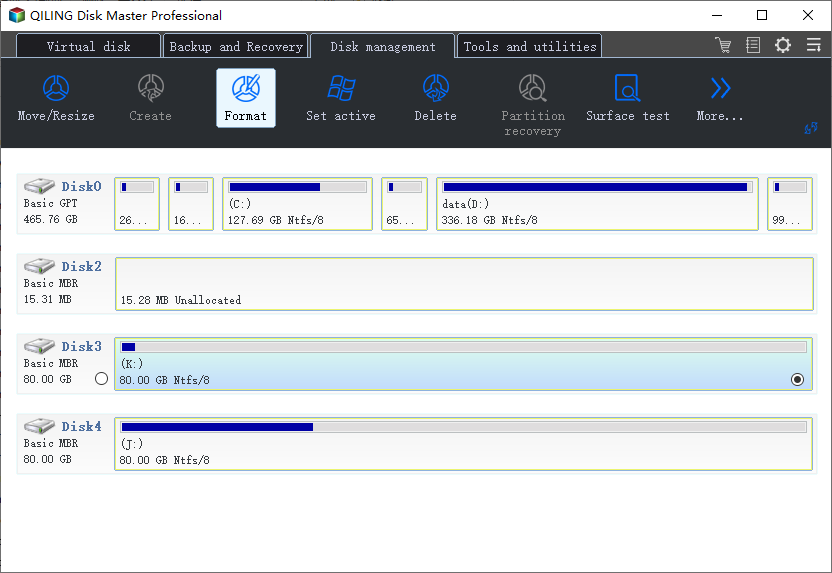
Step 2. Assign a new partition label, file system (NTFS/FAT32), and cluster size to the selected partition, then click "Proceed".
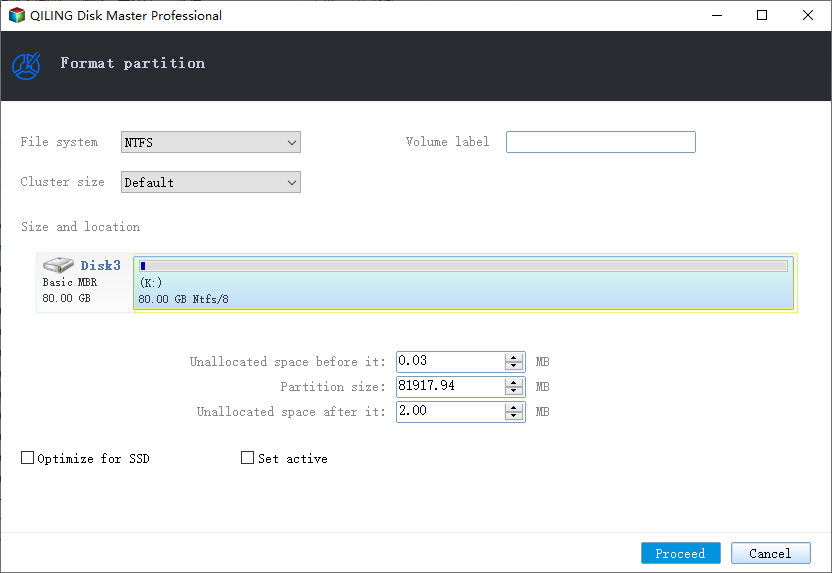
Warning: You should back up your important data before formatting the partition, as formatting will delete all data on the partition.
Method 2. Repair SD card showing less space via Command Prompt
The SD card formatter is a tool that can help regain the original size of a memory card, which can be reduced due to various reasons. While it's the easiest and most powerful way to deal with this issue, an alternative method is also available through the Windows Command Prompt, which requires a higher level of computer skills. As a built-in Windows native tool, it can be used by anyone with administrator privilege without the need to download and install anything.
To troubleshoot the SD card and recover lost storage, follow these steps using the DISKPART command lines: Identify the SD card using the 'list disk' command, select the SD card using 'select disk', list the partitions using 'list partition', select the desired partition using 'select partition', assign a new drive letter using 'assign letter', and finally, format the drive using 'format fs=ntfs' to recreate a new volume.
Step 1: In Windows 10, type "cmd" in the search box, and click on the "Command Prompt" result. Right-click on it and select "Run as administrator" to open the Command Prompt with elevated privileges.
Step 2: On the Command Prompt black window, type diskpart and press "Enter".
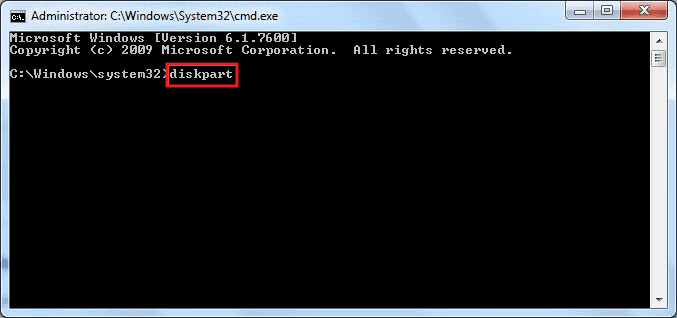
Step 3: Now type "list disk" and press "Enter" to list all disk drives, including your SD card connected to the computer.
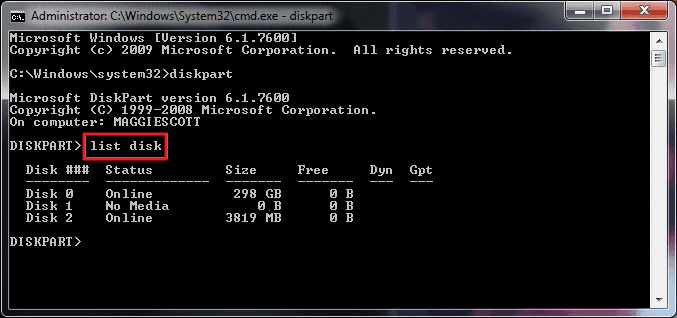
Step 4: To format a specific disk, you need to refer to the list of disk information and type "select disk" followed by the disk number, for example, "select disk 2" and press enter, which tells Diskpart to format disk 2.
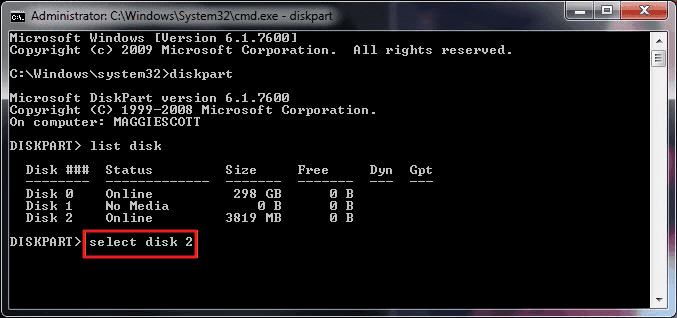
Step 5: Go on to type clean. This step starts to clean up all files and folders on the selected hard disk.
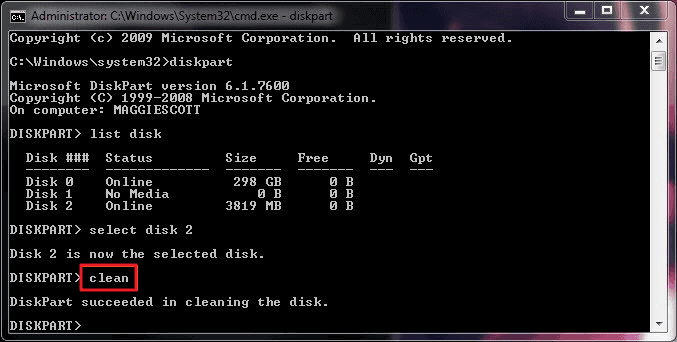
Step 6: Type create partition primary and press "Enter".
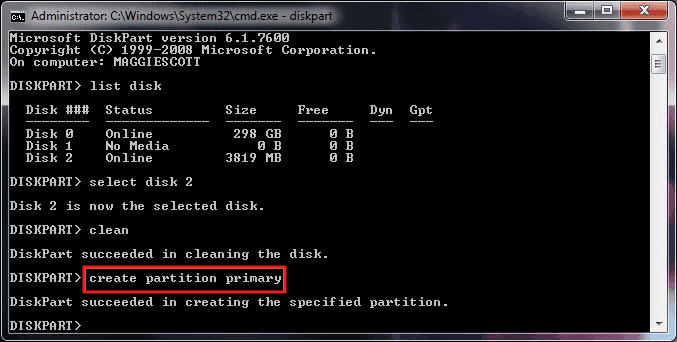
Step 7: After running the diskpart command to create the specified partition, type "format fs=ntfs" (or "format fs=exfat") and press "Enter" to format the drive with an NTFS or exFAT file system.
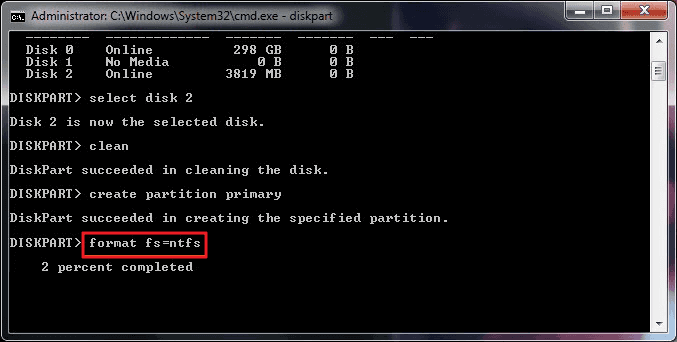
Step 8: At last, assign a drive letter to the newly created partition by typing assign.
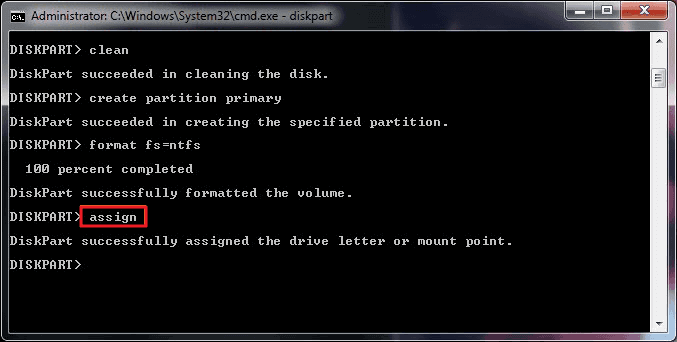
Additional tips for running Diskpart without a hitch:
- To run Diskpart, you need to open the Windows Command Prompt as an administrator. You can do this by pressing the Windows key + X, then selecting Command Prompt (Admin) from the menu. Alternatively, you can search for "Command Prompt" in the Start menu, right-click on it, and select "Run as administrator". If you don't run it as an administrator, Windows will prevent you from running Diskpart properly.
- To resolve the "Diskpart has encountered an error access is denied" error, try running Diskpart as an administrator by right-clicking on the Diskpart icon and selecting "Run as administrator". If that doesn't work, you can also try running the command prompt as an administrator and then running Diskpart from there.
Method 3. Repair SD card showing less capacity via Disk Management
1. Go to Settings > Storage > Disk Management.
Step 1. Press Windows+R > Choose Disk Management.
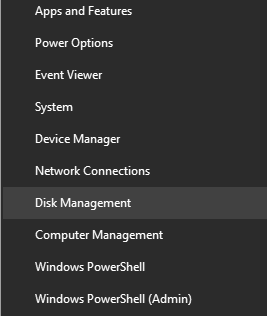
Step 2. Right-click SD card and select Format.
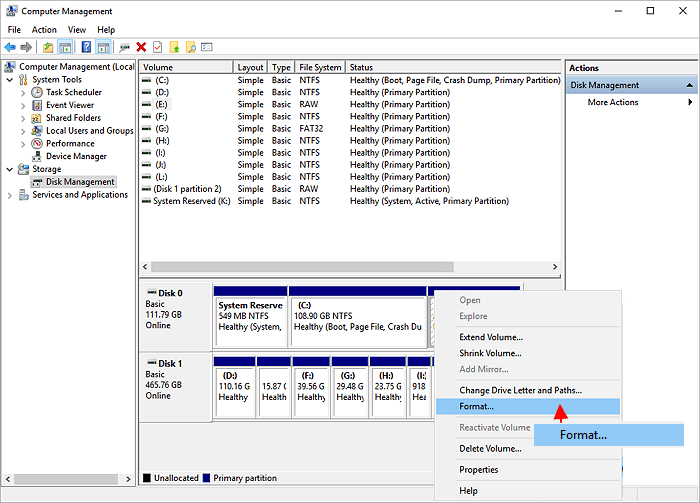
How to restore SD card to full capacity on Mac
If your SD card is showing less capacity than it should, you can try resetting it to its original state. This process can help restore the full capacity of your SD card.
Step 1: Open Disk Utility app.
Step 2: Select your SD card and choose Erase.
Step 3: Choose file system > Erase.
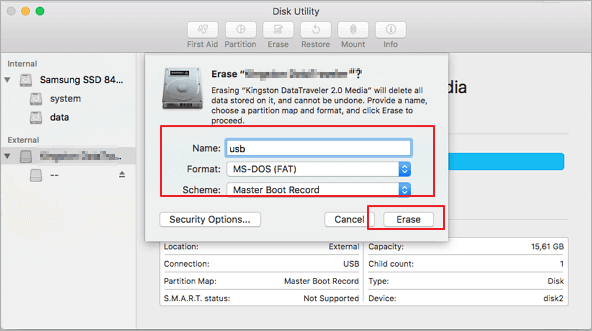
Related Articles
- How to Clone 1TB HDD to 2TB SSD Without Reinstalling on Windows 11/10/8/7
- Transfer Windows 10 System Files to New HDD or SSD
- How Do I Use DiskPart to Delete All Partitions in Windows? Your 2021 Guide Is Here
- Partition Manager for Windows 11 Free Download in 2021
- 4 Top Best Windows 11 Formatter Free Download with Tutorials
- How to Fix Crtical Process Died Error in Windows 11 [2021 Guide]